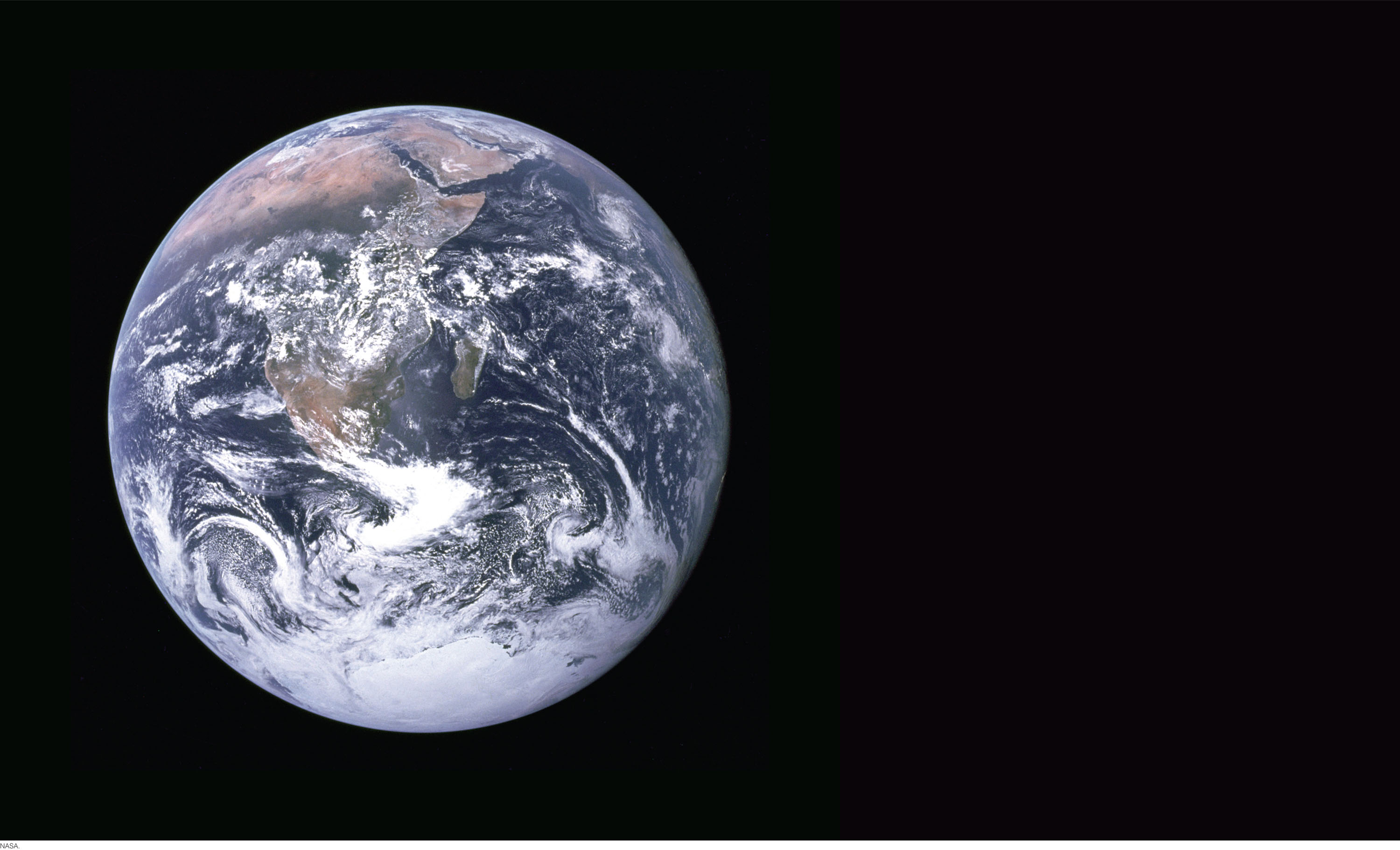1
2

THE EARTH SYSTEM
 The Scientific Method
The Scientific Method Geology as a Science
Geology as a Science Earth’s Shape and Surface
Earth’s Shape and Surface Peeling the Onion: Discovery of a Layered Earth
Peeling the Onion: Discovery of a Layered Earth Earth as a System of Interacting Components
Earth as a System of Interacting Components An Overview of Geologic Time
An Overview of Geologic Time
3
EARTH IS A UNIQUE place, home to millions of organisms, including ourselves. No other planet we have yet discovered has the same delicate balance of conditions necessary to sustain life. Geology is the science that studies Earth: how it was born, how it evolved, how it works, and how we can help preserve its habitats for life. Geologists seek answers to many basic questions: Of what material is the planet composed? Why are there continents and oceans? How did the Himalaya, Alps, and Rocky Mountains rise to their great heights? Why are some regions subject to earthquakes and volcanic eruptions while others are not? How did Earth’s surface environment and the life it contains evolve over billions of years? What changes are likely in the future? We think you will find the answers to such questions fascinating. Welcome to the science of geology!
We have organized the discussion of geology in this textbook around three basic concepts that will appear in almost every chapter: (1) Earth as a system of interacting components, (2) plate tectonics as a unifying theory of geology, and (3) changes in the Earth system through geologic time.
This chapter gives a broad picture of how geologists think. It starts with the scientific method, the observational approach to the physical universe on which all scientific inquiry is based. Throughout this textbook, you will see the scientific method in action as we describe how Earth scientists gather and interpret information about our planet. In this first chapter, we will illustrate how the scientific method has been applied to discover some of Earth’s basic features—its shape and its internal layering.
To explain features that are millions or even billions of years old, Earth scientists look at what is happening on Earth today. We will introduce the study of our complex natural world as an Earth system involving many interrelated components. Some of these components, such as the atmosphere and oceans, are clearly visible above Earth’s solid surface; others lie hidden deep within its interior. By observing the ways in which these components interact, scientists have built up an understanding of how the Earth system has changed through geologic time.
4
We will also introduce you to a geologist’s view of time. You will think about time differently as you begin to comprehend the immense span of geologic history. Earth and the other planets in our solar system formed about 4.5 billion years ago. More than 3 billion years ago, living cells developed on Earth’s surface, and life has been evolving ever since. Yet our human origins date back only a few million years—less than a tenth of a percent of Earth’s existence. The decades of individual lives or even the thousands of years of recorded human history are inadequate to study Earth’s long existence.